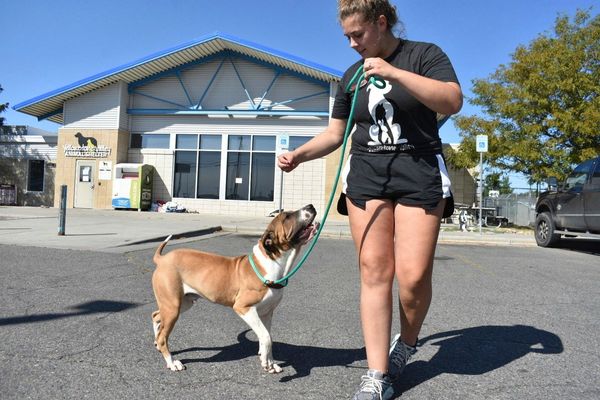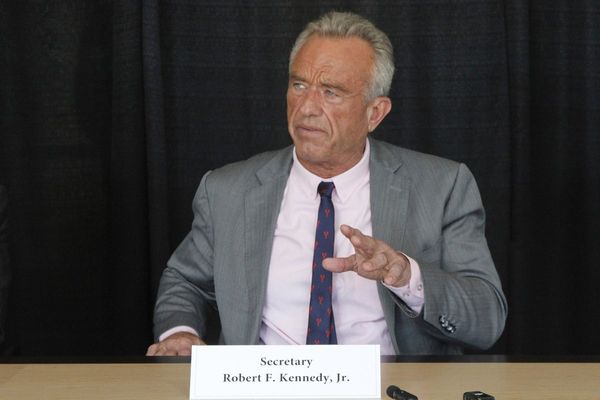
Leeds, 1967-70
My family go to a local Catholic church where, to my wild schoolboy excitement, Leeds United players regularly attend mass. Sightings of Billy Bremner, Eddie Gray, Terry Yorath – tie-knots as wide as their trouser flares – are the real religious experience for me. Some weeks, there is a bigger buzz because of someone else who is clearly, from the way worshippers watch him go down the aisle like a bride, well known.
At the time, this man – whose first TV appearances on Juke Box Jury are probably watched by my parents – means nothing to me. But writing this piece, I have the feeling that my whole life is somehow heading from those Sunday mornings to a horrific encounter with Jimmy Savile 40 years later.
Hertfordshire, 1973-75
Along with most of my generation, I watch Clunk-Click and Jim’ll Fix It, the shows with which Savile, until then mainly a music presenter (he had done Top of the Pops since 1964) morphs into a children’s TV star. He is heading towards 50.
Clunk-Click launches on BBC One on 5 May 1973. It is most notable for having hijacked the title of a public information series urging drivers to use seatbelts (compulsory in new cars from 1968), which Savile fronted. These days, a BBC manager would almost certainly veto it.
Lasting two series, it feels a warmup for Jim’ll Fix It, which launches on 31 May 1975 into schedules that seem both impossibly distant – The Black and White Minstrel Show, with white singers wearing Black makeup, came later in the evening – and weirdly near: at 8.50pm there was a political broadcast by the No campaign in the EU referendum, futilely at that time.
“I want to swim with a dolphin … read the news … fly a plane,” runs the first BBC billing for Jim’ll Fix It. “Whatever your wildest dream is, Jimmy Savile will try to make it come true.” Having access to a studio of grateful, elated children was, we now know, beyond the wildest dream of the presenter.

Bookshops and libraries, 1979
Although already well advanced on becoming one of history’s most prolific criminal sex offenders, Savile shows a peculiar proclivity for public near-confession. In his book God’ll Fix It, he admits to being “an abuser of things and bodies and people”, a formula that can in retrospect allude to both sexual abuse and necrophilia (“bodies” and “people” are oddly differentiated).
Elsewhere in God’ll Fix It, he repeats his regular hope (also expressed in many interviews) that his good works will provide enough “on the credit side” for God Almighty to overlook the “debit side”.
As he boasts that the black lines in the ledger add up to tens of millions of charitable donations, he is effectively confessing that the red entries have nearly equal value. How much bad would you need to do to require so much good? At the time, it never occurs to us his accounting is absolutely precise.
Elland Road, Leeds, 1987
Living in London, I go north to Leeds United games whenever possible. This is a time, two years before the Hillsborough disaster, when overcrowding or scary penning-in on the terraces are common.
During a crowd surge at Elland Road, someone shouts: “Don’t die because you’ll get taken to hospital and be fucked by Jimmy Savile in the morgue.” (He volunteered as a hospital porter, including morgue duties, at Leeds General Infirmary from 1960.) This shows that horrendous stories about the broadcaster – not just paedophilia, but necrophilia – were in the public domain, at least in Yorkshire, for decades before his exposure.
Twenty-five years later, I tell this to a retired high court judge posthumously investigating Savile.
London flat, 1989
Interviewed off the record for my novel about Margaret Thatcher, a member of her retinue recalls Savile as a regular guest at Chequers, teasing and pranking the prime minister much as the Fool does King Lear.
The role of court jester seems to have been Savile’s passport to the powerful. He played the part to Thatcher, the Prince of Wales (who released a statement about his “sadness” soon after Savile’s death), and to Cardinal George Basil Hume, leader of the English Catholic church from 1976 to 1999, who will successfully secure Savile a “Papal knighthood” from the Vatican in 1990 – the same year he becomes a knight of the British empire at the behest of Thatcher (overruling, it was subsequently revealed, civil service concern about his moral suitability).
A London West End restaurant, late 1990s
As a BBC presenter, I am intermittently invited to so-called “talent lunches” with one senior manager or another. At one such meal, I question why Jim’ll Fix It ended, in July 1994, after 19 years and two months, rather than let Savile depart after two full decades, a neater break point. “Yes, well,” says the BBC manager, “child protection laws are stricter now than they used to be.”
A cafe near BBC Broadcasting House, London, early 2006
A meeting of production staff to discuss possible future guests for Mark Lawson Talks To … on BBC Four. Flicking through birthdays, someone notices that Savile will be 80 in October. After swapping rumours about whether he only molests young women or dead bodies as well, we rule him out.
None of those present reach higher management positions at the BBC, so this conversation does not contradict a position the BBC will take in future years: that no one at the top at any point had ever even heard rumours about Savile. Yet, if in my experience of more than 20 years, so many junior BBC staff knew the stories, it must mean that only those who didn’t were ever promoted to senior roles. What are the odds?
BBC Television Centre, London, 26 July 2006

Front Row has been offered “behind the scenes access” to the final recording of Top of the Pops, which is ending after 42 years. I go with a producer who can now only legally be identified as C23, her code in Janet Smith’s 2016 report into Jimmy Savile and the BBC.
The press officer has sent her a list of potential interviews and we choose Tony Blackburn and Reggie Yates to represent both ends of the chronology. We are offered Savile, who had fronted the opening show and is co-hosting the closing one, but decline for the reason that, not being senior BBC management, we have heard all the stories. I also want to keep my colleague from an encounter with a man whose greetings to women are known to involve laboriously kissing or licking the length of their arm (both Thatcher and Princess Diana reportedly suffered this).
We have happily talked to Blackburn and Yates and are packing up to go when Savile splits the double doors of the studio and lopes out, characteristically track-suited, top unzipped to show medallions nesting in chest hair. He is 79. “Now then, now then, now then,” he exclaims. “What’s all this about Radio 4?”
I struggle to write the next paragraph but Smith, in her section 5: 262, records what happened with the pellucid neutrality of legal prose:
He said “hello” to everyone except C23. Then he stood beside her, grabbed her round the waist with his right hand, put his legs round her left thigh (so that her leg was between his two legs) and rubbed his crotch up and down. So far as C23 can remember, he did not say anything. She felt that he was giving a performance. Fortunately Mr Lawson saw what was happening, came over and distracted Savile, then positioned himself between Savile and C23. The interview took place.
There is one detail Smith omits for the proper reason that it is experienced by a witness not a victim. When I block Savile, he is furious, thwarted. His strength is extraordinary for a man four months away from 80 but I have enough height and heft to hold him off, though not without briefly feeling his erection against my leg. (Many have suggested that his favoured baggy leisure wear was doubly calculated for easy removal and to advertise his arousal to his prey without doubt.) Let me be clear that this experience is nothing at all compared to the impacts on his victims, but it is a weird memory to have and gives me some tiny insight into the suffering he inflicted.
In later years, I will agonise over whether I should have stopped the interview happening. But Savile, with a tactical cunning likely developed through his depravities, created a situation in which we would appear to be reneging on an interview that had never been agreed. And at the time, though I know I have definitely seen something happen, it is impossible to be sure exactly what until discussing it on the tube back to Broadcasting House. As seems to be regrettably often the case in such situations, my colleague does not want the incident reported. She is doubtful of the BBC backing us against Savile (as, privately, am I) and asks me not to say anything. But what has happened is confirmation of 30 years of rumours, and puts me in the clear position of having not just heard something but now seen it. So when we get back, I inform my line manager and subsequently gain the impression that the information has been spread more widely.
When this incident becomes public a decade later, the BBC line is that no action was taken because I failed to make a “formal” complaint. I have no recollection of ever being offered a choice of whistles to blow. My memory is that the BBC told me the matter could only be taken seriously if the complaint came from the victim. I will also later be informed that I am mistaken about the number of BBC managers among whom news of the 2006 assault was shared.
BBC Broadcasting House, October 2012
The Sunday Times reports that ITV will soon screen Exposure: The Other Side of Jimmy Savile, a documentary reanimating an investigation into Savile that had been dropped by BBC Two’s Newsnight the previous December.
The following day, a global email from BBC HR urges all employees to inform line managers of any known incidents relating to Savile. I remind two executives of 2006. On that autumn Monday morning, the corporation moves with a speed as determined as its earlier stasis.
C23 and I are rapidly questioned (without warning) by the Metropolitan Police, to whom our names have apparently been given. We both speak to detectives and, after Smith is appointed on 11 October to investigate Jimmy Savile and the BBC, we each give evidence during the four years of her investigation.
Westminster, 26 June 2014
An NHS inquiry reports that Savile abused multiple patients at Stoke Mandeville Hospital (where he had his own room) and Broadmoor secure psychiatric hospital (to which a Conservative government actually gave him a set of keys). There are also rumours of – and reports of Savile boasting about – raping and abusing corpses at Leeds General Infirmary, supporting the terrace rumour at Elland Road four decades before.
Scarborough, October 2014

With time to spare before reviewing a play at Alan Ayckbourn’s Stephen Joseph theatre, I drive up to Woodlands Cemetery and work out from newspaper photos where Savile’s grave must be. His headstone – a vast granite triptych with the inscription It Was Good While It Lasted, a DJ’s last glib jingle – was pulverised at midnight two years before, its fragments used for landfill.
Someone appears to have laid a single flower on the grassy knoll, unless the wind filched a tribute from an undisgraced grave. A tag with the council logo is tied on the fence behind, in line with the mound. Is that so they know where he is in case of exhumation or removal? Others seem to be following this ghoulish route; a group arrive as I leave. There is a sense of not being able to believe the scale of the fall until seeing what was an extravagant shrine (to a man called “a saint” in BBC coverage) but is now just scruffy lawn.
Northamptonshire, 20 January 2016
The Exaro news website publishes a reputed draft copy of Smith’s report, detailing hundreds of assaults in the 1960s and 70s. There is no mention of 2006, or of other allegations in the latter part of the 20th century. I contact Smith’s lawyers. Apparently, the scope of the inquiry is “historical” and “focusing on the 60s and 70s”, which means that any managers involved are now lost to their pensions or eternity. (It is unclear if this remit is set by Smith or the BBC.) So an assault just a decade ago is too recent to count? No one is saying that. Further interviews are conducted.
BBC Broadcasting House, 25 February 2016
The Smith report is officially published (expanded from the Exaro draft) and now details assaults from 1964 to 2006. It is revealed that the 79-year-old Savile, on the day he assaulted my colleague, also attacked an audience member at the final Top of the Pops.
While pointing out that she has no power to compel executives to give testimony under oath, Smith clears the BBC of “knowledge by the body corporate”. This allows the BBC to claim, as it quickly does, that bosses are exonerated, although it is actually a legal concept, meaning not that nobody knew of any Savile problems but that not everyone at a senior level knew everything: ie there was no organised cover-up.
My bigger surprise is that every senior BBC figure interviewed claims never to have heard any rumour or gossip about Savile. It would be comprehensible if they felt there was insufficient information to take action, but not that they were completely clueless.
I make contact through third parties with the manager who told me 20 or so years earlier about why Jim’ll Fix It was taken off air. Their eventual reply is that the comment referred to increasing protective measures around studio shows involving children (including vetting and chaperones), making the format prohibitively expensive.
Some will see it as my duty to name – even turn in to the police – this BBC manager. However, they have never denied under oath knowing about Savile’s activities, so perjury is not an issue, and a retired detective has advised me that, as the boss’s gloss on the “child protection” comment is plausible, our exchange would become a they say/I say dispute, making further action impossible.
The immediate response to the Smith report of the BBC director-general, Lord Hall of Birkenhead, is to sack Tony Blackburn from Radio 2 and BBC local radio, for alleged failure to cooperate with Smith, decisions later reversed after threats of legal action by the DJ.
One other oddity. I am due on publication day to record interviews for a documentary at Broadcasting House. But the producer is contacted by a manager who suggests it would not be a “good day” for me to be around the building. When pressed on this, the manager suspends the request. There are TV crews outside, seeking comments on the Smith report. This, presumably, is the worry.
Exaro is later discredited for accepting and disseminating the testimony of “Nick” (now serving an 18-year jail term under his real name of Carl Beech), who had made false accusations against multiple public figures to the post-Savile Operation Midland investigation into alleged celebrity paedophile rings. Lord Hall is subsequently severely criticised by the Dyson report for his “woeful” handling of a BBC inquiry into the means by which Martin Bashir secured a 1995 Panorama interview with Diana, Princess of Wales.
London, 2020-22
In Pizza Express on the South Bank, I meet, at his request, Neil McKay, a TV dramatist I admire for works including Appropriate Adult, See No Evil: The Moors Murders and Four Lives. He is researching a four-part drama about Savile and his victims that the BBC will air later in 2022, starring Steve Coogan as the predatory presenter. There is no writer I would trust more than McKay not to ignore the BBC’s complicity in its long-time employee’s crimes.
I am also interviewed by 72 Films, a British production company commissioned by Netflix to make a two-part documentary about Savile. That is a hard decision. I don’t like talking publicly on this subject because it is painful even at my secondary level of exposure, and because some people seem to get jumpy when I do.
It is a melancholy fact that everyone who ever tried to expose Savile – including Meirion Jones and the late Liz MacKean, the producers who led the Newsnight investigation – soon left the BBC.
So it would be much easier never to think or write about Savile again. But I feel a duty as apparently the only person alive who ever tried to report a Savile assault to the BBC in real time. And I do so because I believe his story should be examined and dramatised: I believe that how he got away with it for decades should snap at the ankles and yelp at the throats of the British establishment for ever like an angry dog.
If the BBC can show a Savile story, I can, perhaps should, tell mine. Because the true story is his victims, and how the BBC, Department of Health, Conservative party, Catholic church, police forces, local councils and libel law let them down. I had glimpses of him in action; they live for ever with the consequences of a monster for whom the British establishment – political, royal, broadcasting, ecclesiastical, medical, charitable – provided a dazzling shield.
Jimmy Savile: A British Horror Story is on Netflix from 6 April







